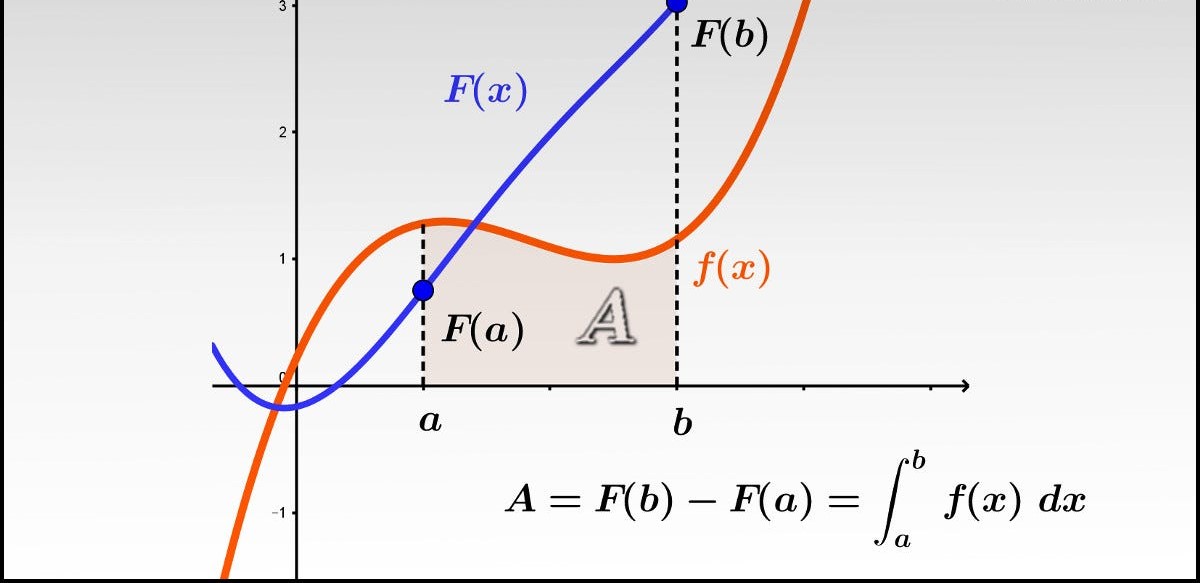
The Fundamental Theorem of Calculus is a cornerstone of mathematical analysis, providing a profound connection between the seemingly distinct fields of differentiation and integration. This theorem, which comprises two parts, fundamentally transforms the way we understand and apply calculus. It serves as a bridge between the concepts of instantaneous change and accumulation, shedding light on the intricate relationship between these fundamental principles.
In this article, we will delve into the depths of the Fundamental Theorem of Calculus, unraveling its significance and exploring its practical applications. By understanding the essence of this theorem, we can gain a deeper appreciation for the elegance and power of calculus in solving real-world problems. So, let's embark on a journey to uncover seven essential facts about the Fundamental Theorem of Calculus, illuminating its role in shaping the landscape of mathematics and its impact on various scientific and engineering disciplines.
Key Takeaways:
- The Fundamental Theorem of Calculus connects calculus and analysis, helping us calculate areas and rates of change accurately in fields like physics and engineering.
- It unifies differentiation and integration, enabling us to find slopes and areas under curves, laying the foundation for advanced mathematical theories and applications.
The Fundamental Theorem of Calculus is a Pillar of Mathematics
The Fundamental Theorem of Calculus is a fundamental concept in mathematics that connects the seemingly distinct fields of calculus and analysis. It comprises two parts, each of which plays a crucial role in understanding the behavior of functions and their corresponding derivatives and integrals. This theorem serves as a cornerstone in various scientific and engineering disciplines, enabling the precise calculation of areas, volumes, and rates of change, among other applications.
It Unifies Differentiation and Integration
The theorem establishes a profound relationship between differentiation and integration, demonstrating how these two operations are inversely related. This unification allows mathematicians and scientists to seamlessly transition between finding the slope of a curve and determining the area under it, providing a powerful tool for solving diverse real-world problems.
It Empowers Precise Area Calculations
One of the key implications of the Fundamental Theorem of Calculus is its ability to precisely compute the area under a curve. By leveraging the theorem's principles, mathematicians can accurately determine the exact size of irregular shapes and regions, revolutionizing the field of geometry and enabling the precise quantification of complex spatial phenomena.
It Enables Accurate Rate of Change Analysis
The theorem's significance extends to the realm of physics, economics, and engineering, where the precise measurement of rates of change is paramount. By leveraging the Fundamental Theorem of Calculus, experts can analyze and predict changes in various quantities, such as velocity, population growth, and economic trends, with unparalleled accuracy.
It Lays the Foundation for Advanced Calculus Concepts
The theorem serves as a springboard for advanced calculus concepts, providing a solid theoretical underpinning for more intricate mathematical theories and applications. Its far-reaching influence permeates diverse fields, including differential equations, mathematical modeling, and advanced physics, underscoring its indispensable role in shaping modern scientific and technological advancements.
It Was Pioneered by Renowned Mathematicians
The development of the Fundamental Theorem of Calculus was propelled by the groundbreaking contributions of eminent mathematicians, including Isaac Newton and Gottfried Wilhelm Leibniz. Their collaborative efforts and groundbreaking insights paved the way for a revolutionary mathematical framework that continues to underpin countless scientific and engineering breakthroughs.
It Continues to Inspire Mathematical Exploration
The enduring relevance of the Fundamental Theorem of Calculus is evident in its ongoing impact on mathematical research and exploration. Contemporary mathematicians and scholars continue to delve into its intricacies, uncovering new applications, extensions, and implications that further enrich our understanding of this pivotal theorem.
The Fundamental Theorem of Calculus stands as a testament to the enduring power of mathematical principles in unraveling the mysteries of the natural world and driving human progress. Its profound influence reverberates across diverse disciplines, shaping the way we comprehend and manipulate the fundamental forces that govern our universe.
Conclusion
In conclusion, the Fundamental Theorem of Calculus stands as a cornerstone of modern mathematics, bridging the gap between differentiation and integration. Its profound implications have revolutionized the way we understand and apply calculus in various scientific and engineering disciplines. By grasping the essence of this theorem, one gains a deeper insight into the fundamental principles that underpin the fabric of calculus. Embracing the elegance and power of the Fundamental Theorem of Calculus opens doors to a world of mathematical discovery and practical applications, shaping the way we comprehend and manipulate the physical and natural phenomena around us.
FAQs
What is the significance of the Fundamental Theorem of Calculus?
The Fundamental Theorem of Calculus holds immense significance as it establishes a fundamental connection between differentiation and integration, providing a powerful tool for solving a wide range of problems in mathematics, physics, engineering, and other fields.
How does the Fundamental Theorem of Calculus impact real-world applications?
The theorem's impact extends to real-world applications in fields such as physics, engineering, economics, and biology, where it enables the precise calculation of quantities such as area, volume, and accumulated change, essential for modeling and understanding various phenomena.
Was this page helpful?
Our commitment to delivering trustworthy and engaging content is at the heart of what we do. Each fact on our site is contributed by real users like you, bringing a wealth of diverse insights and information. To ensure the highest standards of accuracy and reliability, our dedicated editors meticulously review each submission. This process guarantees that the facts we share are not only fascinating but also credible. Trust in our commitment to quality and authenticity as you explore and learn with us.
